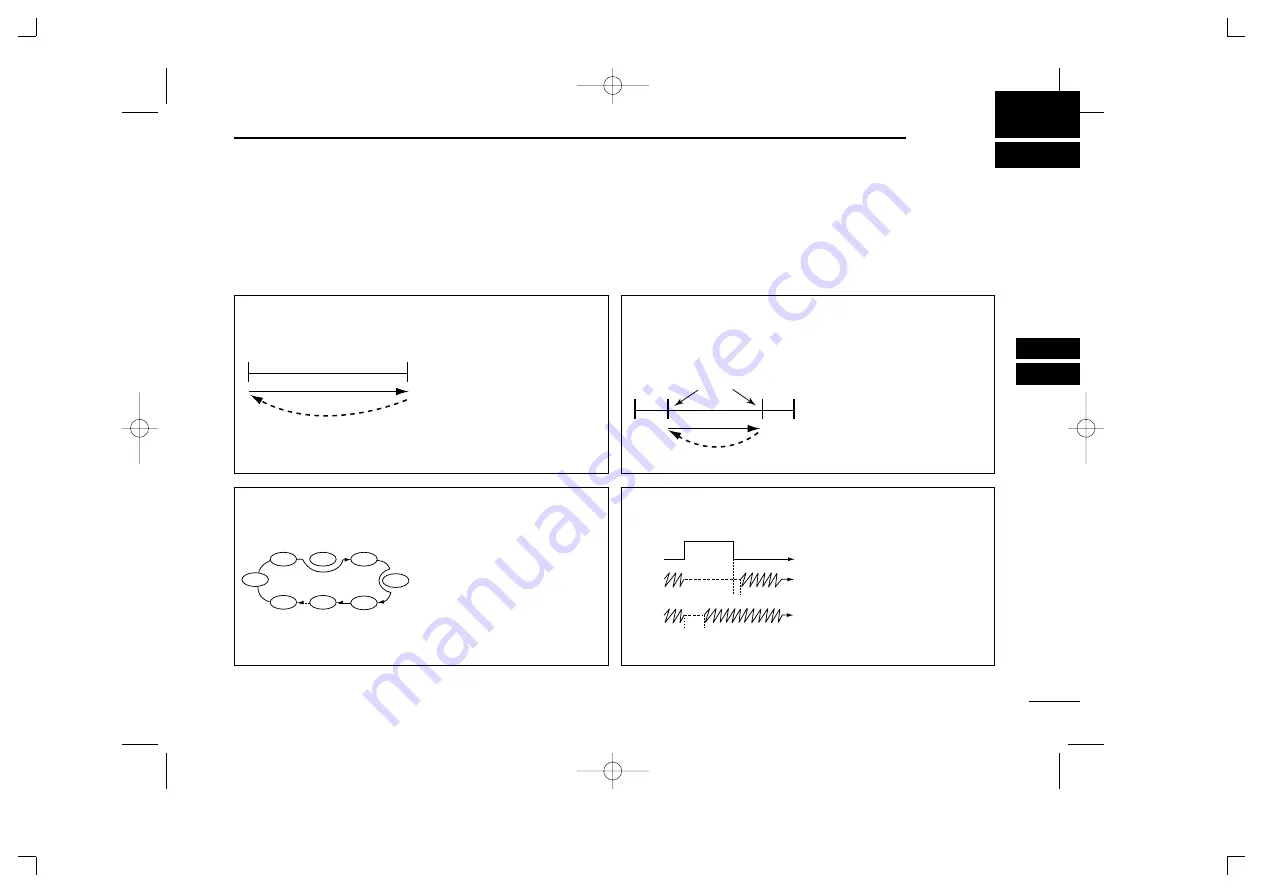
40
7
SCAN OPERATION
6
7
■
Scan types
Scanning searches for signals automatically and makes it
easier to locate new stations for contact or listening purposes.
There are 3 scan types and 4 resume conditions to suit your
operating needs.
BAND SCAN
(p. 41)
Repeatedly scans all frequen-
cies over the entire band.
Used as the simplest scan
without any preliminary set-
tings necessary.
Band
edge
Band
edge
Scan
Jump
PROGRAMMED SCAN
(p. 41)
Repeatedly scans between
two user-programmed fre-
quencies. Used for checking
for frequencies within a speci-
fied range such as repeater
output frequencies, etc.
5 pairs of scan edges are
available and scans 1A–1b
(P1), 2A–2b (P2), 3A–3b (P3),
4A–4b (P4), 5A–5b (P5).
Band
edge
Band
edge
Scan edges
Scan
Jump
1A
2A
3A
4A
5A
1b
2b
3b
4b
5b
Start
End
MEMORY SCAN
(p. 41)
Repeatedly scans memory
channels except those set as
skip channels. Used for often-
called channels and for by-
passing normally busy
channels such as repeater
frequencies.
SKIP
SKIP
M 0
M 4
M 1
M 2
M 3
M 5
M 199
M 6
SCAN RESUME
CONDITION
(p. 45)
4 resume conditions are avail-
able: 3 timer scans and pause
scan. When receiving a sig-
nal, pause scan pauses until
the signal disappears; timer
scans pause for 5, 10 or
15 sec.
Pause
scan
Receiving
a signal
Timer
scan
Pausing
2 sec.
☞
NOTE:
A tone scan function is available to search for subaudible tones (e.g. when you want to find a subaudible tone fre-
quency necessary to open a repeater). See p. 55 for details.
IC-2720H_2.qxd 03.5.13 9:45 Page 40 (1,1)
















































